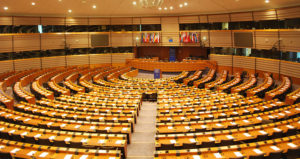Approval European Drinking Water Directive postponed

-
 Editorial Team
Editorial Team
Share article:
Due to the corona crisis, the approval of the new Drinking Water Directive (DWD) has been postponed. EU institutions are now prioritising health and economic dossiers. Lawyers are working on final legal texts of the DWD for all Member States which are expected to be finished in autumn 2020. The European Parliament can then vote on the final text. The new Drinking Water Directive will probably not come into force until November or December 2020.
Before the outbreak of the corona crisis, it was expected that the new Drinking Water Directive would come into force this spring. On Wednesday 18 December 2019, the European Parliament and the European Council in Strasbourg agreed on the revision of the Drinking Water Directive. Negotiations on the new directive were difficult last year. The main stumbling blocks were access to drinking water for all, new standards for emerging substances, micro plastics, mandatory leak monitoring, transparency for consumers and materials in contact with drinking water. But just before Christmas, the European Parliament and the European Council finally reached an agreement.
Emerging chemicals
The new drinking water directive introduces rules for emerging pollutants, such as micro plastics, endocrine disruptors and new types of chemicals, such as PFAS. Standards for materials in contact with drinking water will also be introduced. The European Chemicals Agency (ECHA) will ensure that only safe substances can be used in pipes and taps. Harmonization of national regulations in all Member States will facilitate the marketing of materials in Europe and at the same time it will improve public health.
Leaks
The new Drinking Water Directive gives the public access to simple, transparent information about the quality and supply of drinking water. This is expected to improve confidence in tap water. Large water companies must also provide information on the performance of the water system every year. In doing so, efficiency, leaks and energy consumption are examined. The aim is to reduce water loss through leaks. The new rules further assume a so-called risk-based approach, which allows for further prevention and mitigation measures to protect drinking water sources.

















